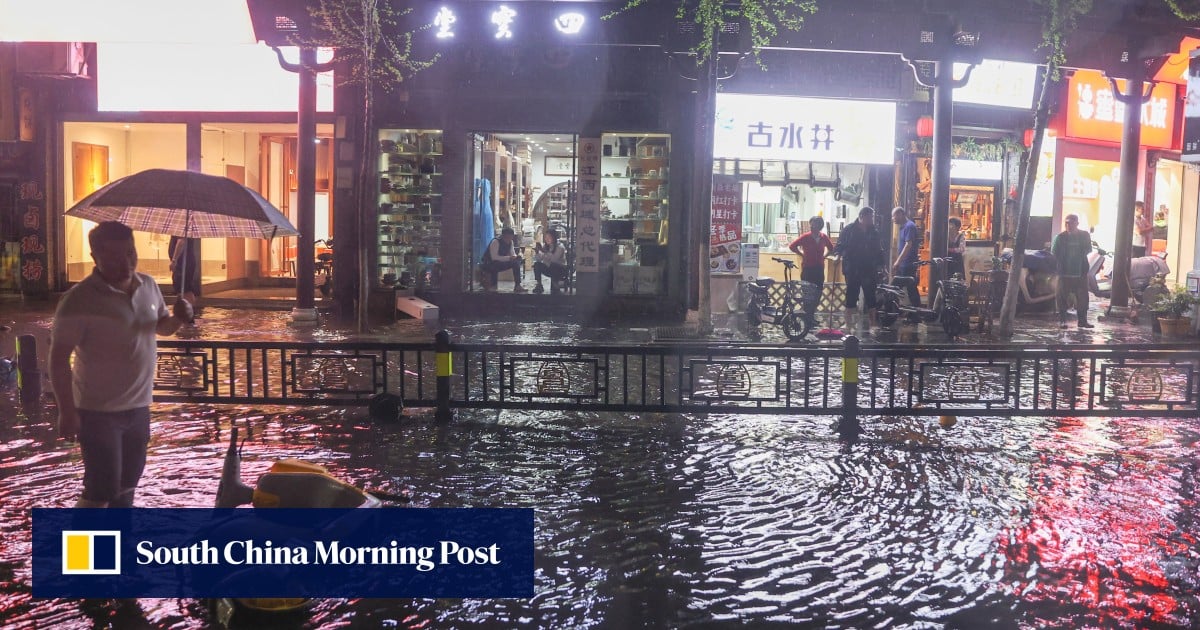According to the Ministry of Water Resources, China’s major rivers and lakes can flag “numbered floods” when their water levels reach the warning level or register a flood of “once in two to five years” magnitude.
By 9am on Sunday, the water level at the local measuring station in Guangdong’s Yingde county, which lies along the banks of the Bei, had risen 4.07 metres (13.4 feet) above the warning level. The ensuing floods submerged buildings and shops in the county.
The Ministry of Water Resources in Beijing has launched a Level 4 emergency response and sent a working group to Guangdong for inspection and guidance. China has a four-tier flood-control emergency response system, with Level 1 the most severe.
Guangdong’s flood and drought disaster prevention department said 832 people had been evacuated to safer ground by noon on Sunday, the first working day after a three-day break for the Ching Ming Festival. Schools and businesses were operating as normal, with commodity prices stable and people going about their day as usual, the department added.
The Ching Ming or “tomb sweeping” holiday starting Thursday saw Guangdong enter its first flood season of the year.
Waterlogging following heavy rainfall – which broke records in some areas – caused some railway and highway operations to be suspended, and over a thousand people were relocated in multiple cities across the province. No casualties have been reported thus far.
The National Meteorological Centre on Sunday issued a blue alert for the second day in a row for several provinces in southern and eastern China, blue being the lowest of China’s four alert levels for rainstorms. Heavy to severe rains have been forecast until 2pm on Monday for parts of Jiangxi, Fujian and Guangdong province.
China’s ‘sponge cities’ plan struggles to hold water. Here’s why
China’s ‘sponge cities’ plan struggles to hold water. Here’s why
Central Guangdong will see the heaviest rainfalls, accompanied by thunderstorms, strong winds or even hail in some areas, and maximum hourly rainfall of up to 60mm (2.36 inches) in places, the forecasters said.
Neighbouring Hunan province also activated a Level 4 flood prevention emergency response at 8am on Sunday, in view of rainfall intensity and floodwater release from upstream reservoirs of the Xiang River. Several tributaries of the Xiang are flowing above the warning level, causing floods in downstream regions.
The latest extreme conditions come after seven people were killed when severe convective weather, marked by intense winds and cloudbursts, struck eastern Jiangxi province last weekend.
Three of the victims were sucked out of their high-rise flats as they slept, when typhoon-like winds following violent rain and hailstorms ripped windows off their frames.
The extreme weather, which hit on March 31, engulfed nine cities in Jiangxi, including Nanchang and Jiujiang, with 93,000 people in 54 counties affected, provincial officials said.







